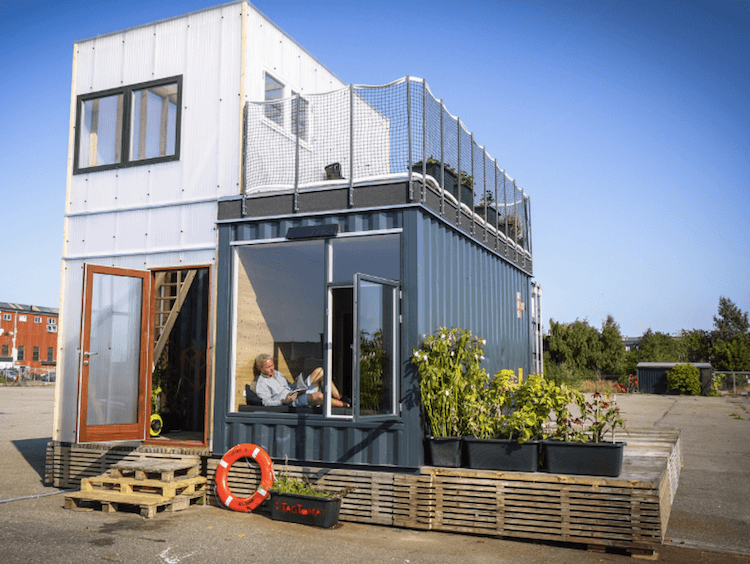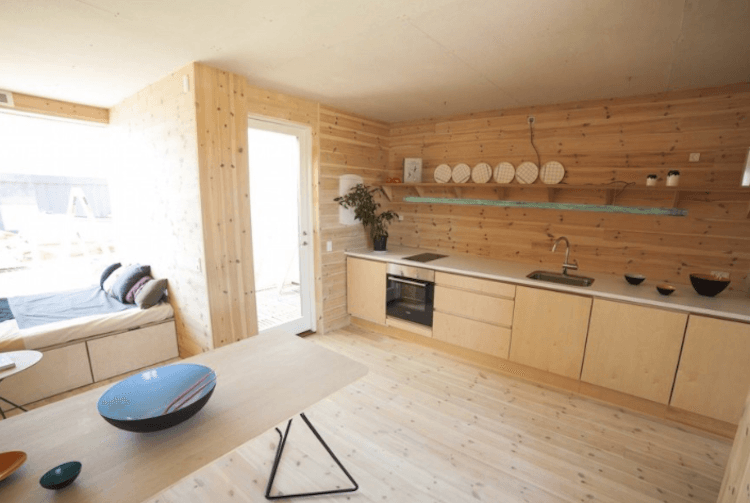Shipping Containers Are Becoming ‘Home, Sweet Home’ All Over the World
IN FOCUS, 22 Feb 2016
Lorraine Chow, EcoWatch – TRANSCEND Media Service
13 Feb 2016 – An old steel box might not sound like the coziest place to live, but for many people around the world, a humble shipping container means “home, sweet, home.”
From Berlin to Bangalore to London, people all over are shacking up in shipping containers. And now, Copenhagen-based container architecture firm CPH Shelter and architect Søren Nielsen, a partner at Danish firm Vandkunsten Architects, have designed the “CPH Village,” a planned shipping container structure aimed to help solve the area’s student housing shortage.
Not too shabby for a shipping container!https://t.co/hek3gseyQb
— Stonehealth Ltd (@Stonehealth) February 10, 2016
The CPH Village project is an offshoot of the company’s standalone CPH Shelter, an easily transportable “plug and play” unit that can be customized easily and inexpensively. For instance, a single house can be merged, divided or reshaped over time to family or senior housing.
The CPH designers can certainly turn an old box into something livable, as Arch Daily wrote:
The unit’s central room is created by cutting a 40-foot container in two halves and pulling them two meters apart, creating a large living area flanked by two niches for the bedroom and bathroom. The bedroom alcove faces the living room and features a daybed that can be used as seating and sleeping, thereby saving the space traditionally dissolved by the redundant functions of a sofa and a bed.
The homes itself are built from up-cycled materials and comes furnished with a kitchen, bath and integrated and multi-functional cabinet and storage space. It is also insulated and left unpainted inside to avoid fumes or chemical exposure from paint.
Because there is no need to dig a foundation and can be disassembled and reassembled, the homes are ideal for temporary, or even permanent, university housing.
CPH Shelter has a 80 percent lower CO2 footprint in the production phase than traditional buildings, the company boasts on their website.
The CPH Village project will be launched later this year. “Our effort to create cheap, flexible and sustainable colleges have taken a big leap forward,” the company wrote on a Facebook post in November 2015. “Yesterday the city council of Copenhagen unanimously agreed to ask the Danish government to adjust the Planning Act and make it possible to construct temporary student residences in urban perspective areas—eg. Refshaleøen or Nordhavn in Copenhagen.
“The government will present their proposals for a new Planning Act early 2016. If the right framework is put in place, we are ready to construct hundreds of sustainable and affordable student housing in the coming years.”
Copenhagen won’t be home to the first shipping container student village in the world. In Amsterdam, The Wenckehof—which consists of 1,000 shipping containers converted into housing for students—is the largest development of its kind, The Guardian reported in October 2015.
Although shipping container homes have its critics, advocates tout its versatility and affordability. One Wenckehof resident told The Guardian that he pays is €450 a month ($505) in rent to live at Wenckehof and also qualifies for a €140 ($170) monthly housing subsidy, much cheaper than the €600 ($675) a month that students often pay to share an apartment in central Amsterdam.
For tiny home aficionados, a repurposed shipping container means living simply and affordably. EcoWatch recently featured six beautiful tiny homes made out of shipping containers.
DISCLAIMER: The statements, views and opinions expressed in pieces republished here are solely those of the authors and do not necessarily represent those of TMS. In accordance with title 17 U.S.C. section 107, this material is distributed without profit to those who have expressed a prior interest in receiving the included information for research and educational purposes. TMS has no affiliation whatsoever with the originator of this article nor is TMS endorsed or sponsored by the originator. “GO TO ORIGINAL” links are provided as a convenience to our readers and allow for verification of authenticity. However, as originating pages are often updated by their originating host sites, the versions posted may not match the versions our readers view when clicking the “GO TO ORIGINAL” links. This site contains copyrighted material the use of which has not always been specifically authorized by the copyright owner. We are making such material available in our efforts to advance understanding of environmental, political, human rights, economic, democracy, scientific, and social justice issues, etc. We believe this constitutes a ‘fair use’ of any such copyrighted material as provided for in section 107 of the US Copyright Law. In accordance with Title 17 U.S.C. Section 107, the material on this site is distributed without profit to those who have expressed a prior interest in receiving the included information for research and educational purposes. For more information go to: http://www.law.cornell.edu/uscode/17/107.shtml. If you wish to use copyrighted material from this site for purposes of your own that go beyond ‘fair use’, you must obtain permission from the copyright owner.

